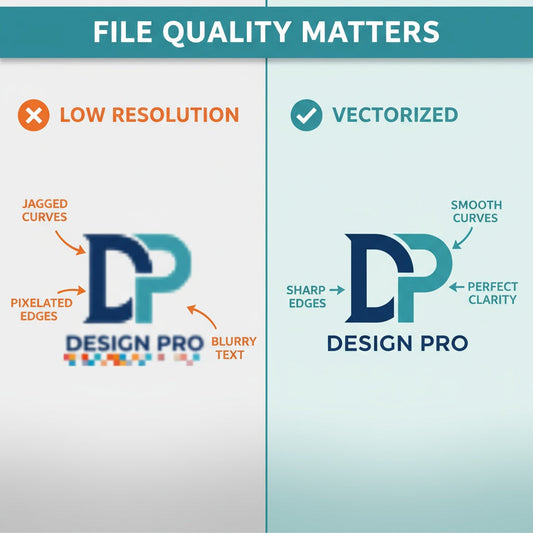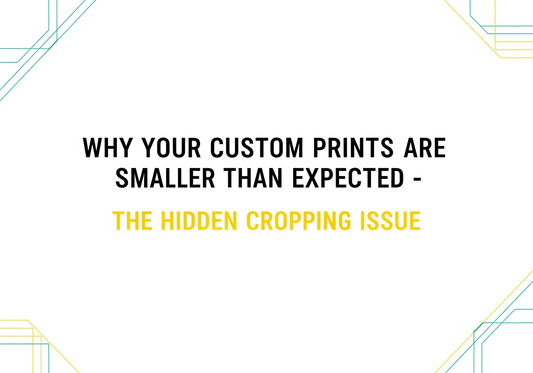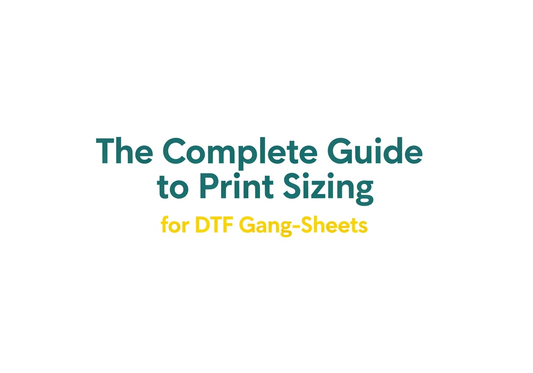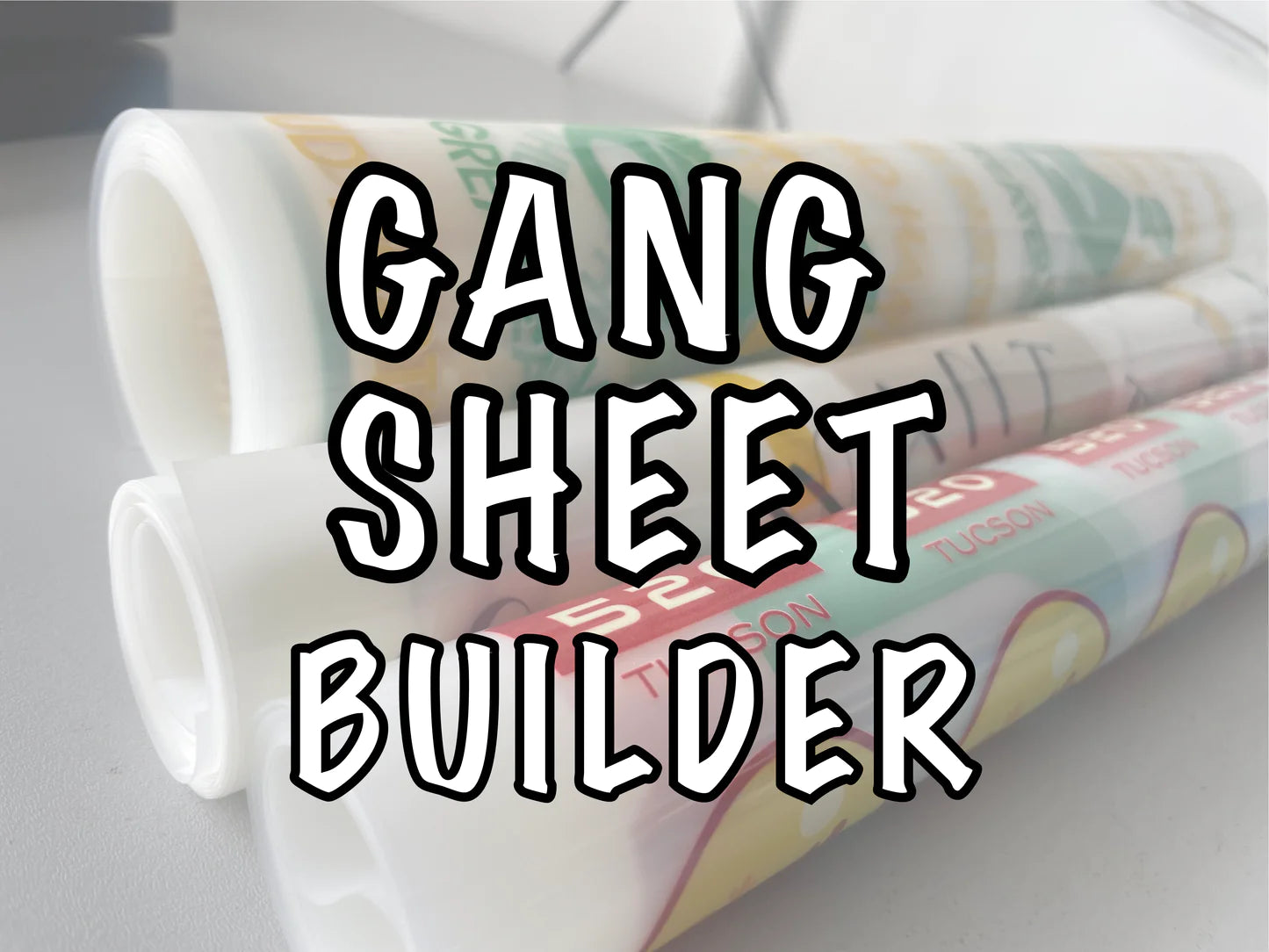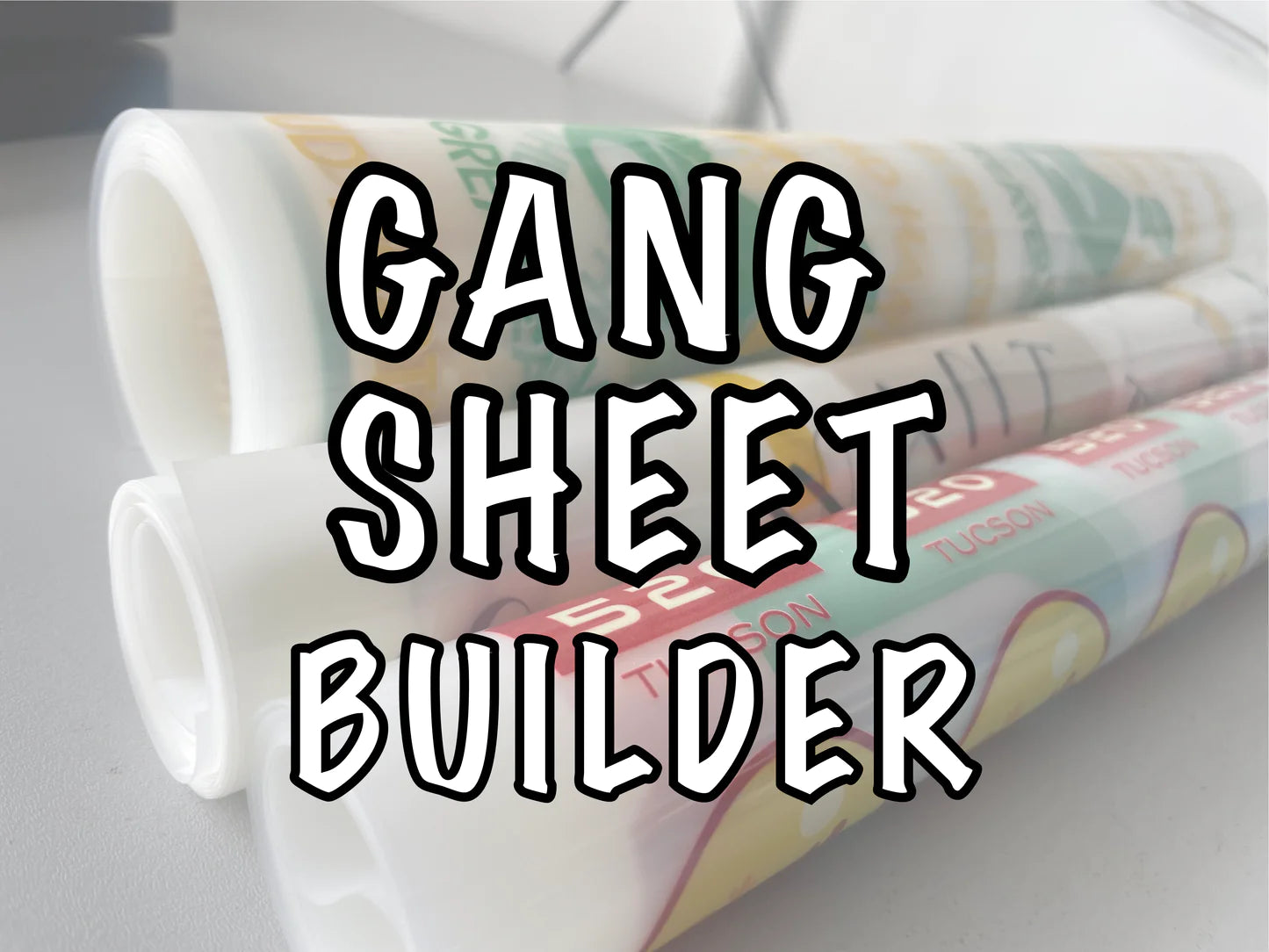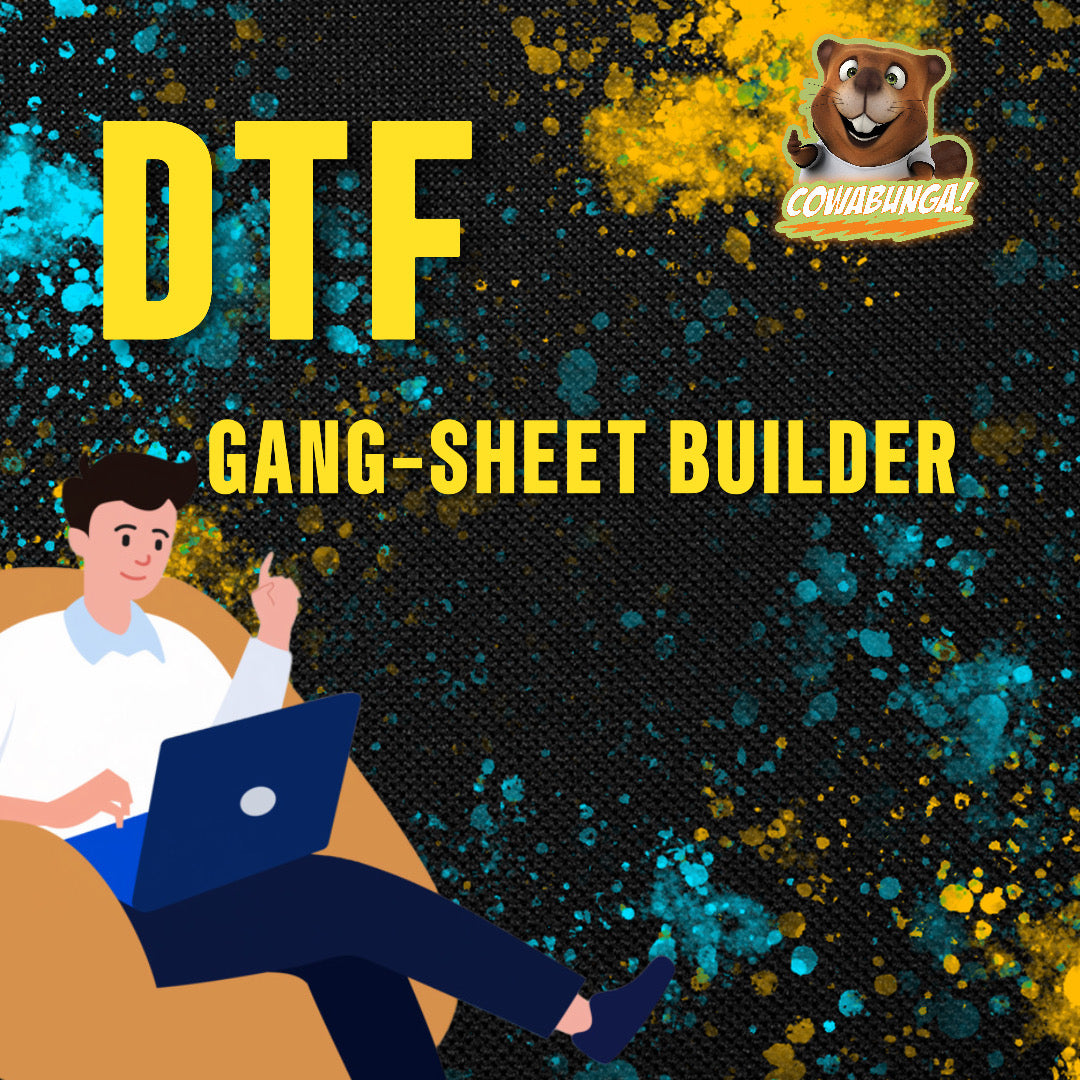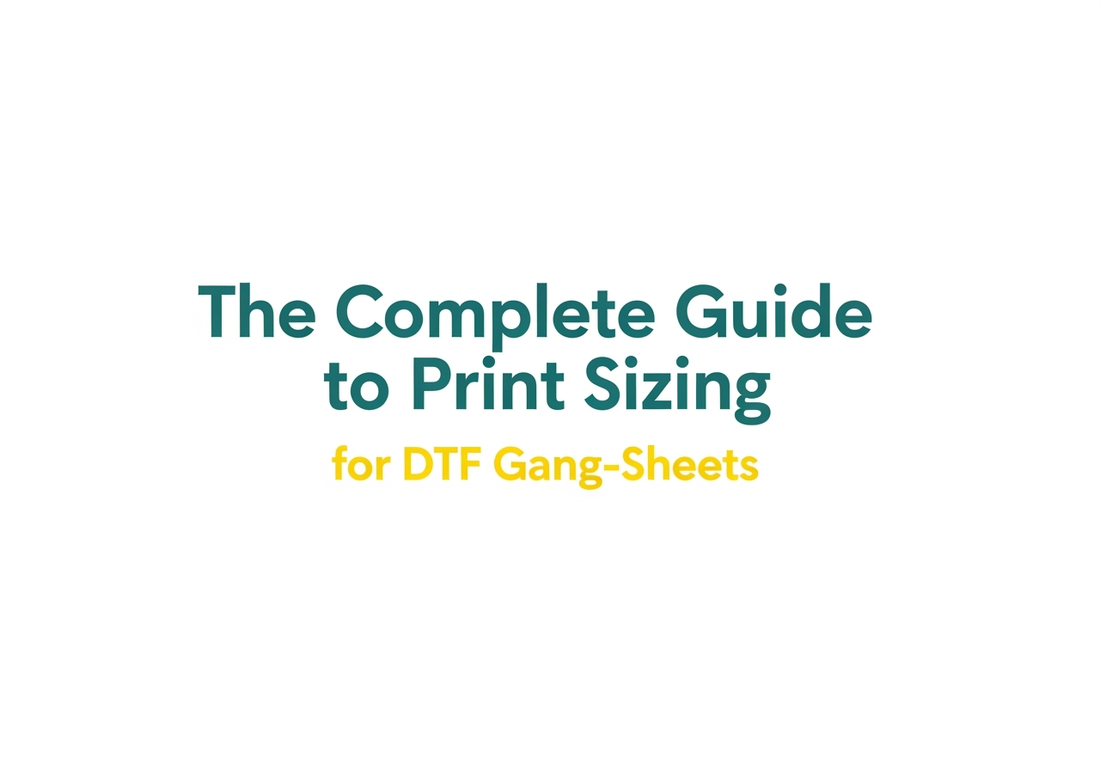
Guide to Print Sizing for DTF Gang-Sheets: Industry Standards Every Print Shop Should Know
Share
One of the most critical decisions you'll make is determining the right print size for each garment type. Getting sizing wrong can result in designs that look unprofessional, overwhelm the garment, or worse - don't fit at all.
Why Print Sizing Matters
Print sizing isn't just about making sure your design fits on the shirt - it's about creating balanced, professional-looking apparel that customers actually want to wear. The right size enhances the garment's appearance, while the wrong size can make even the best design look amateur.
The Visual Impact of Proper Sizing:
- Proportional balance between design and garment
- Professional appearance that reflects quality workmanship
- Comfortable wear that doesn't restrict movement
- Longevity - properly sized prints last longer and maintain their appearance
Industry Standard Print Sizes by Garment Type
Adult Garments (S-3XL+)
Full Front/Back Prints:
- Standard Width: 11 inches maximum
- Optimal Range: 9-11 inches depending on design complexity
- Height Considerations: 12-14 inches maximum to maintain proper placement
Why 11 inches works: This width provides excellent coverage on adult garments while ensuring the design doesn't extend into side seam areas where it could crack or peel. It also maintains proportional balance across all adult sizes from Small to 3XL+.
Left Chest Prints:
- Standard Size: 3.5-4 inches width
- Placement: 4-5 inches from center front, 7-8 inches from shoulder seam
- Height: Proportional to width, typically 3-4 inches
Professional Tip: Left chest prints should be visible but not overwhelming. The 3.5-4 inch range ensures readability without competing with full front designs.
Youth Garments (YXS-YXL)
Full Front/Back Prints:
- Standard Width: 9.5 inches maximum
- Optimal Range: 8-9.5 inches
- Height Considerations: 10-12 inches maximum
Why 9.5 inches is ideal: Youth garments are proportionally smaller, and adult-sized prints can overwhelm the garment and look unprofessional. The 9.5-inch width maintains visual balance while providing adequate design space.
Left Chest Prints:
- Standard Size: 3-3.5 inches width
- Placement: Proportionally similar to adult placement
- Height: 2.5-3.5 inches
Infant/Toddler Garments (6M-4T)
Full Front Prints:
- Standard Width: 4 inches maximum
- Optimal Range: 3.5-4 inches
- Height Considerations: 4-5 inches maximum
Special Considerations for Infant Sizing:
- Safety first: Smaller prints reduce choking hazards from peeling
- Comfort: Larger prints can be stiff and uncomfortable for small children
- Proportional appearance: 4-inch width maintains cute, appropriate scaling
Print Placement Guidelines
Center Front Placement:
- Adult: 3-4 inches down from collar seam
- Youth: 2.5-3 inches down from collar seam
- Infant: 2 inches down from collar seam
Center Back Placement:
- Adult: 2-3 inches down from collar seam
- Youth: 2 inches down from collar seam
- Infant: 1.5-2 inches down from collar seam
Left Chest Placement:
- Horizontal: 4-5 inches from center front
- Vertical: 7-8 inches from shoulder seam (adult), adjust proportionally for youth/infant
Gang-Sheet Optimization Tips
Maximizing Sheet Efficiency:
- Group similar sizes to minimize waste
- Plan for standard sizes to reduce custom cutting
- Consider print orientation for optimal sheet usage
- Account for bleed area in your measurements
Common Gang-Sheet Mistakes to Avoid:
- Oversizing designs to fill available space
- Ignoring garment proportions when planning layouts
- Mixing incompatible sizes on the same sheet
- Forgetting placement guidelines when sizing designs
Special Considerations by Print Type
Text-Heavy Designs:
- Minimum font size: 12pt for readability
- Consider viewing distance: Left chest prints viewed closer than full front
- Account for fabric texture: Some fabrics require larger text for clarity
Detailed Graphics:
- Maintain detail integrity: Don't shrink complex designs below readable size
- Consider DTF capabilities: Fine details print better at appropriate sizes
- Plan for color vibrancy: Larger prints showcase color capabilities better
Logo Reproductions:
- Maintain brand standards: Many brands have minimum size requirements
- Consider logo complexity: Detailed logos need adequate size for clarity
- Account for viewing context: Business cards vs. promotional wear require different approaches
Quality Control Through Proper Sizing
Professional Appearance Checklist:
✅ Proportional to garment size
✅ Appropriate for intended use
✅ Maintains design integrity
✅ Follows brand guidelines (if applicable)
✅ Comfortable for wearer
Common Sizing Red Flags:
❌ Prints extending into side seams
❌ Left chest prints larger than 4.5 inches
❌ Adult-sized prints on youth garments
❌ Text too small to read comfortably
❌ Designs that overwhelm the garment
Advanced Sizing Considerations
Garment Style Variations:
- Tank tops: Reduce width by 10-15% due to narrower chest area
- Hoodies: Account for hood and pocket placement
- Long sleeves: Consider sleeve print interaction with front designs
- Performance wear: Factor in stretch and movement
Design Complexity Factors:
- Simple designs: Can work at smaller sizes
- Complex graphics: May require larger sizing for clarity
- Photographic prints: Need adequate size for detail reproduction
- Text-based designs: Require minimum sizing for readability
The Business Impact of Proper Sizing
Customer Satisfaction:
- Reduced complaints about print appearance
- Increased repeat orders from satisfied customers
- Positive word-of-mouth referrals
- Professional reputation building
Operational Efficiency:
- Fewer reprints due to sizing issues
- Streamlined gang-sheet planning with standard sizes
- Reduced customer service time explaining sizing
- Improved profit margins through efficient production
Conclusion: Sizing as a Competitive Advantage
Understanding and implementing proper print sizing isn't just about following industry standards - it's about delivering professional results that set you apart from competitors. When you consistently deliver properly sized prints, you build trust with customers and establish your reputation as a quality-focused print provider.

